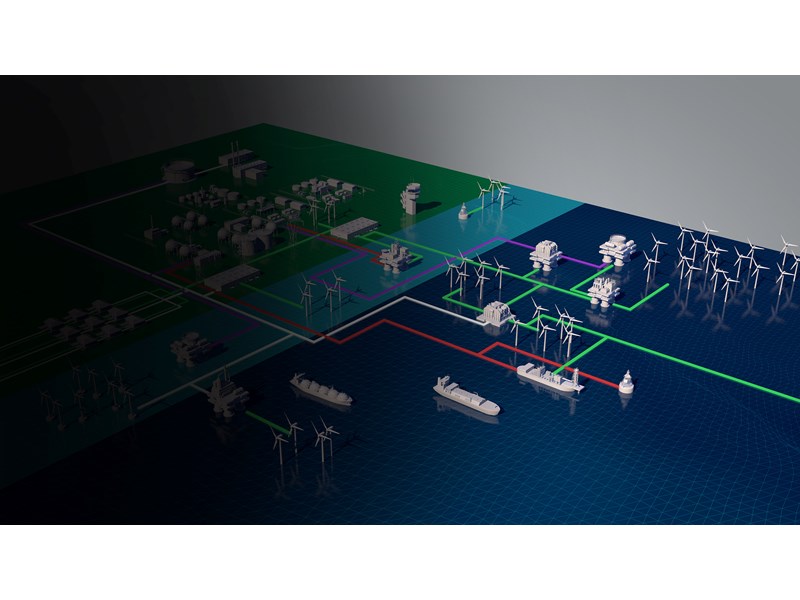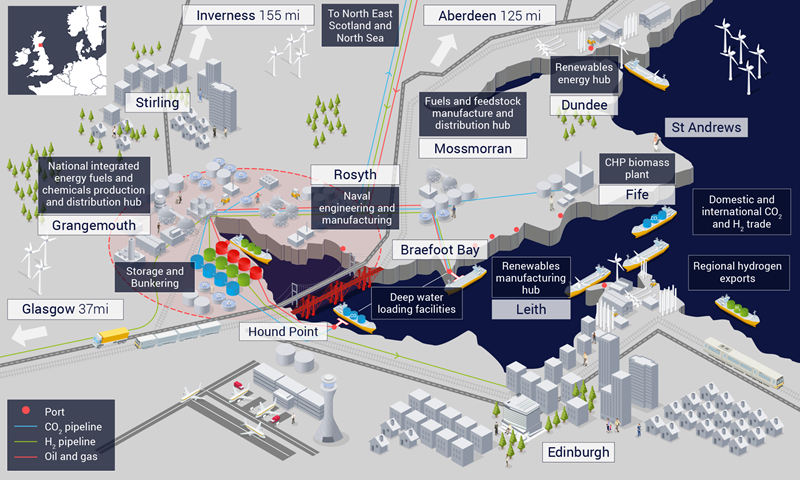Scotland the brave: a Firth of Forth net zero hub for COP26?
With all eyes on Scotland for COP26 there is an unparalleled opportunity for bold action. Momentum behind a net zero hub could have an outsized impact on the UK’s energy transition
1 minute read
Malcolm Forbes-Cable
Vice President, Upstream and Carbon Management Consulting

Malcolm Forbes-Cable
Vice President, Upstream and Carbon Management Consulting
Malcolm is an expert in strategy development, transaction support and the energy transition.
Latest articles by Malcolm
-
The Edge
No country for oil men (and women)
-
Opinion
The Norwegian emissions dilemma
-
Opinion
The case for developing UK's oil and gas resources: Rosebank and Cambo fields
-
Opinion
Scotland the brave: a Firth of Forth net zero hub for COP26?
-
Opinion
A £2.5 trillion transformation: the economic impact of a net-zero North Sea
-
Opinion
Is net zero oil and gas production possible?
In November, the UK will host the 26th United Nations Climate Change Conference (COP26) in Glasgow. It will bring together governments, organisations, businesses and citizens from around the world to accelerate progress on meeting the goals of the 2016 Paris Agreement.
It’s a fitting location. The UK was the first major economy to commit to net zero emissions. In 2019, the UK’s independent Climate Change Committee (CCC) recommended that it reduce its greenhouse gas emissions to net zero by 2050. Scotland, which generates around a tenth of UK emissions, was advised to target net zero by 2045. These targets are now enshrined in law.
Up to 2019, average annual declines in total UK greenhouse gas (GHG) emissions were 2.6%. In 2020, the Covid-19 pandemic and resulting economic slowdown meant emissions fell 8.9% to 414.1 million tonnes of carbon dioxide equivalent (MtCO2e), a 48.8% drop from 1990 levels. However, this came with the economic cost of a 9.9% fall in GDP. Reducing emissions while sustaining the economy lies at the heart of the net zero ambition.
As we wrote in a recent white paper, it is in this context that Scotland – and, more specifically, the industrial Firth of Forth – has a key role to play. It’s home to immense renewable potential, coupled with a rich oil and gas legacy that has spawned vast engineering expertise, oil and gas infrastructure and a reputation for excellence in the global energy business. The influence of the North Sea in the oil and gas sector shows the outsized impact a small area can have on a global industry.
Fill in the form to receive a complimentary copy of our white paper, The Firth of Forth – net zero at the heart of Scotland. Or read on for a taste of our views on Scotland’s pivotal net zero role.
A small area with big reach
The Firth of Forth has played a major role in the global energy business for more than two centuries. The Port of Grangemouth, less than 30 miles from Edinburgh and Glasgow, has been a trading hub since 1768, while locally mined shale oil gave rise to numerous refinery operations in the latter half of the 19th century.
Just as the Firth of Forth is home to a substantial part of Scottish industry, so too must it be home to a substantial part of its climate efforts.

Malcolm Forbes-Cable
Vice President, Upstream and Carbon Management Consulting
Malcolm is an expert in strategy development, transaction support and the energy transition.
Latest articles by Malcolm
-
The Edge
No country for oil men (and women)
-
Opinion
The Norwegian emissions dilemma
-
Opinion
The case for developing UK's oil and gas resources: Rosebank and Cambo fields
-
Opinion
Scotland the brave: a Firth of Forth net zero hub for COP26?
-
Opinion
A £2.5 trillion transformation: the economic impact of a net-zero North Sea
-
Opinion
Is net zero oil and gas production possible?
In the early 1970s, with the first oil from the North Sea, the Forties Pipeline System was built to transport oil to the Firth of Forth, establishing it as a major logistical and trading hub for the oil business. Since 1975, the Forties Pipeline System has delivered more than 9 billion barrels of oil to be refined at Grangemouth or loaded onto tankers for the international market.
In the 1980s, ExxonMobil and Shell opened plants on the north side of the estuary to process North Sea natural gas liquids and to manufacture ethylene. The region’s refining and petrochemical industry has supported the growth of businesses along the energy value chain, forming a critical part of the Scottish economy. Moreover, its natural harbour, multiple port facilities and access to international markets has attracted a wide range of industries, from ship building, biomass and oilfield equipment manufacture to logistical hubs for the food and drinks sectors and, more recently, the Port of Leith Renewable Energy Hub, launched earlier this year by Forth Ports.
The net zero opportunity of COP26
Just as the Firth of Forth is home to a substantial part of Scottish industry, so too must it be home to a substantial part of its climate efforts. And with the eyes of the world firmly north of Hadrian’s Wall ahead of COP26, there’s an unparalleled opportunity to turn the Firth of Forth into a net zero hub.
Such hubs have already formed around major UK industrial clusters, supporting their transformation from old industrial sites into integrated energy and industrial hubs of the future.
The Firth of Forth’s industrial might is critical to the Scottish economy, providing employment, tax revenue, fuels and chemical feedstocks to industries at home and abroad. It is also responsible for more than 10% of Scotland’s CO2 emissions. Importantly, though, it is a centre of expertise with the skills needed to address the multiple technical and commercial challenges of delivering net zero. It is a major part of the net zero challenge, but also a crucial part of the solution.
Up to 2019, Scotland had reduced GHG emissions by 43.8% from 1990 levels. This was principally driven by the shift from coal to renewables, but also by the decline of heavy industry. En route to its 2045 net zero target, the Scottish Parliament has committed to an ambitious 75% emissions reduction by 2030 and a 90% cut by 2040.
The Scottish government has also set a target of 5 GW of low-carbon hydrogen production by 2030. These are major tasks requiring unwavering focus on and strategic investment in critical areas of the economy to ensure a sustainable and just transition. With the continued success of the renewables sector, attention must turn to the harder-to-abate sectors, such as those located around the Firth of Forth.
A Firth of Forth net zero hub would be part of the solution
Creating a Firth of Forth net zero hub would acknowledge the challenge head on: an economically important industrial cluster that needs to tackle its emissions and fulfil its role as a key agent in the national energy transition and delivery of net zero. It would highlight the strategic importance of the region and draw attention to the many attractive characteristics that make it such a compelling industrial and trading hub. Raising its profile under a net zero banner would increase focus, build momentum, spark ideas and seed initiatives.
Navigating a path to net zero while protecting jobs and the economy won’t be easy. With COP26 in Glasgow in November in mind, this paper develops a local perspective. However, with climate change top of the global agenda, highlighting the pivotal role that ports and industrial clusters play has global resonance. You can read more about our view of the road ahead in our white paper, The Firth of Forth – net zero at the heart of Scotland.
Fill in the form at the top of the page for your complimentary copy.
What does the energy transition mean for your business?
Our consulting team can help you assess the opportunities and address the challenges of the journey to a lower-carbon future.
Get in touch to find out more.

Malcolm Forbes-Cable, Vice President, Energy Consulting








